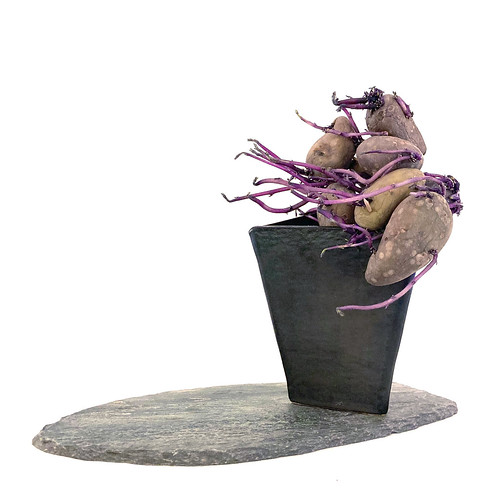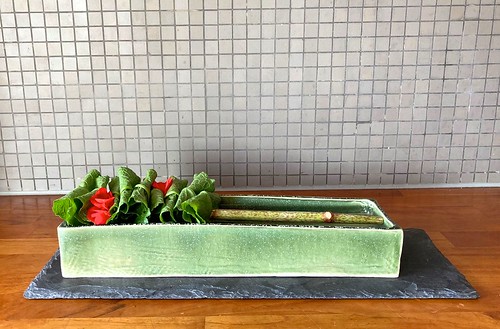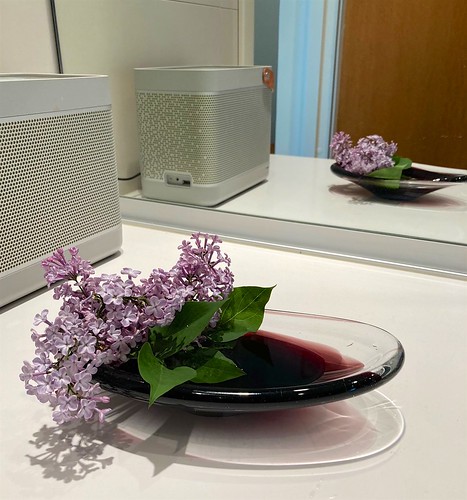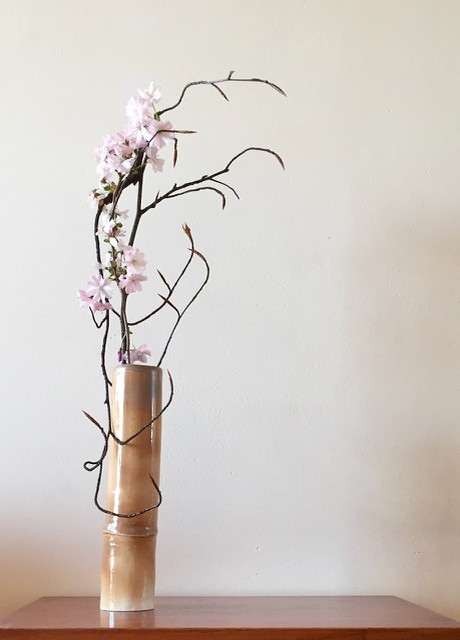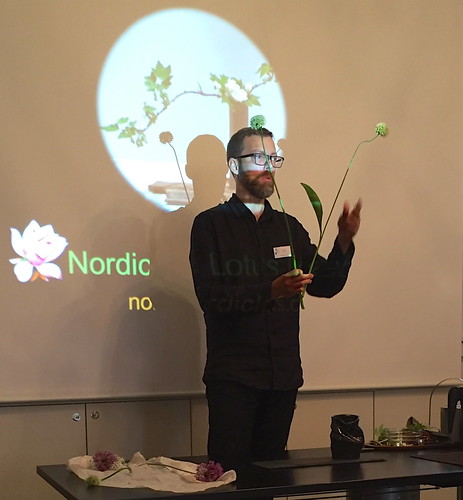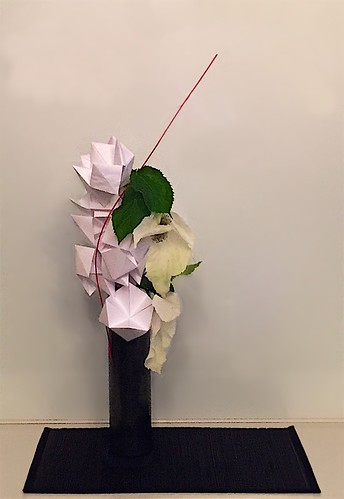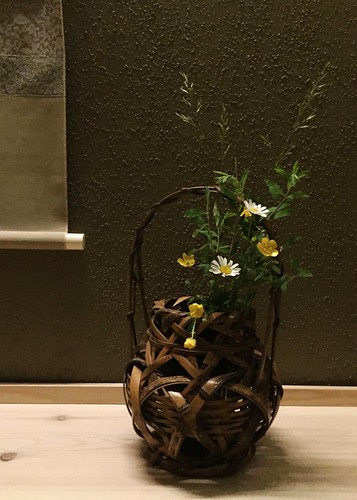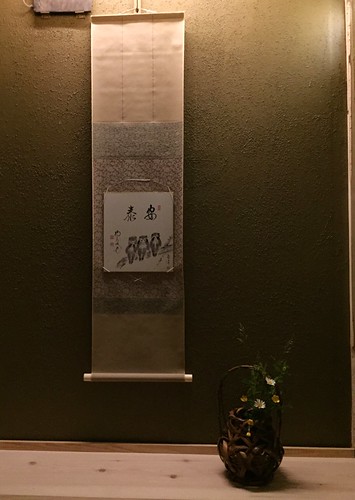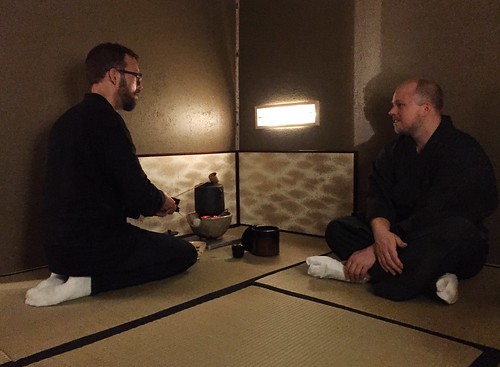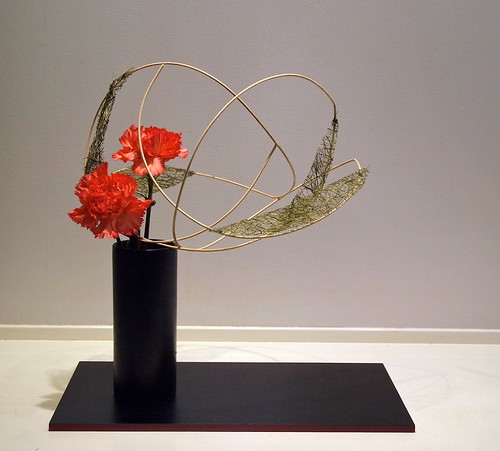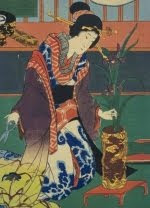When coming back from my summer vacation I was surprised to find that the almond potatoes left in the refrigerator had grown beautiful purple sprouts while I was away - an opportunity that can't be missed! The sprouts gives the potatoes an interesting energy, and turn them into a perfect material for a contemporary ikebana arrangement.
Old almond potatoes with sprouts.
Ishu-ike free style mass arrangement with vegetables.
Ceramic vase by Sonja Gajic, at Veldreid keramikk.
The Sogetsu school teaches as an important principal not to use more flowers than what is needed to make a strong composition. Many flowers have a pretty look, that can confuse the presentation of a more sculptural material.
I made two variations of the arrangement, starting with an ishu-ike (using one material only) with the potatoes grouped into a mass on one side of the vase, and the sprouts stretching towards the other side, adding movement and creating interesting lines in the composition.
Old almond potatoes with sprouts, Anise hyssop (Agastache foeniculum).
Although I like the idea of letting the potatoes manage on their own, focusing on the contrast between the two different qualities of the potatoes and the sprouts, I wanted to try to add a flower that could enhance the color of the sprouts. Normally I would go for just one or two single headed flowers, like purple Dahlias or even orchids, that could work as an accent to the other materials. This time I wanted to try something a bit more naturalistic. My favorite balcony herb, an Anise hyssop (Agastache foeniculum) plant with purple brushlike flowers, made a not too showy addition.
